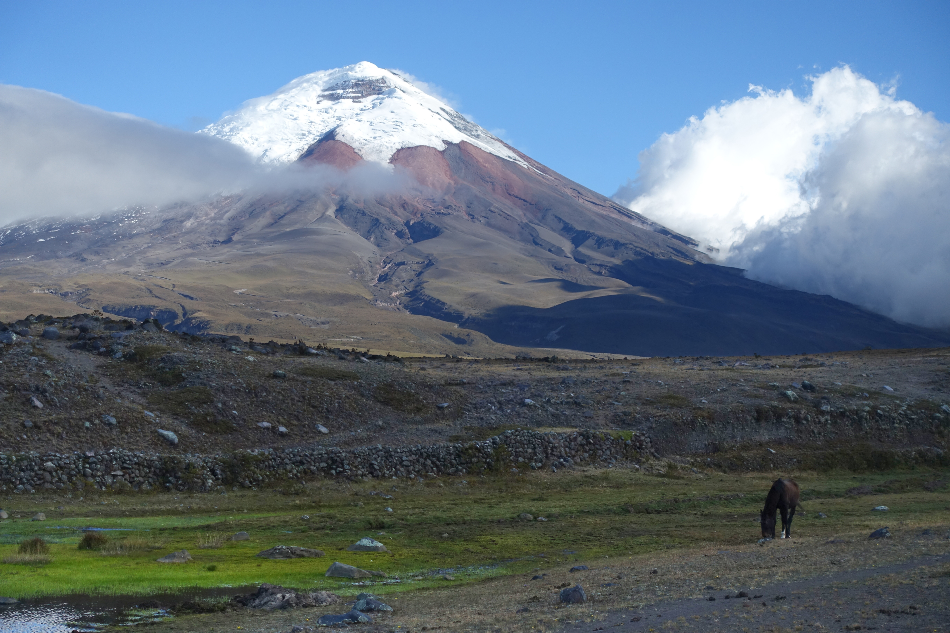Oct 5 2020
The nature reserves of the Earth are the foundation for safeguarding worldwide biodiversity. They are bound to be influenced by future climate change in extremely diverse ways.
 In the Cotopaxi National Park, Ecuador. Image Credit: Samuel Hoffmann.
In the Cotopaxi National Park, Ecuador. Image Credit: Samuel Hoffmann.
Comprehensive local knowledge of the effects of climate change can thus make a substantial contribution to the regulation of protected areas and the preservation of their ecological purpose.
A biogeographic research conducted by the University of Bayreuth and published in the Diversity and Distributions journal stresses this fact. The research is derived from climate forecasts for over 130,000 nature reserves globally.
For their new research, Prof. Dr. Carl Beierkuhnlein and Dr. Samuel Hoffmann from the Biogeography research group studied a maximum of 137,735 nature reserves on six continents.
They focused on the subject of what deviations from existing climate scenarios these areas will face in the next 50 years, and the influence this will have on local plant and animal species.
Blanket forecasts on climate change are not specific enough to assist in counteracting the threat of further loss of biodiversity. This can only succeed if we know exactly what local climate change for example in nature reserves—will be caused by global trends. As our study impressively demonstrates, these local effects can be very different, even in neighbouring areas.
Dr Carl Beierkuhnlein, Professor, Biogeography Research Group, University of Bayreuth
By 2070, mostly severe local climate changes are anticipated, particularly in protected areas of tropical nations. Currently, these are of great significance for the conservation of endangered animal and plant species worldwide and are under immense pressure because, simultaneously, they are being used extensively by humans.
A few of these protected areas are situated in mountains high above sea level. The temperatures in these mountains are anticipated to increase markedly due to climate change.
As a result, certain endangered species will perhaps try to move to higher and thus cooler mountain areas. There, the danger to individual species could increase quickly as resources will be lesser at higher altitudes.
For migratory species, higher mountain regions could prove to be a dead end.
Dr Samuel Hoffmann, Professor, Biogeography Research Group, University of Bayreuth
However, the new research also indicates that protected areas where future climate conditions will vary particularly from the present have a few characteristics that could have an advantageous effect on the conservation of species.
They are mostly very large, have considerably varied landscape profiles, and thus offer different environmental settings that are only mildly affected by direct human interference or divided by traffic routes. These settings are favorable for the adaptation of species, for instance through genetic exchange and better availability of resources.
Furthermore, certain species that are forced to abandon their present habitats because of climate change may find new habitats in the same neighborhood because of this diversity of landscape. Thus, regulations based mainly on local climate changes could be useful in alleviating the effects of climate change in nature reserves.
Global climate change forecasts are constantly filled with uncertainty. This is the reason why the Bayreuth scientists used 10 types of global models of climate change in their research of nature reserves.
Furthermore, they incorporated two considerably different global greenhouse gas emission scenarios in their evaluations. Small square areas measuring about 1 km2 were analyzed in each of the nature reserves examined.
Distinctive properties of these “cells” were then put into relation with the climatic change to be anticipated on a universal scale by 2070. These properties include, for instance, landscape profile, height above sea level, local flora and fauna, precipitation and temperature, and human intervention.
These investigations have enabled Bayreuth scientists to be successful at estimating the effects of local climate change for very small areas around the world.
The Bayreuth research was financially supported by the EU project ECOPOTENTIAL, the biggest EU project on ecosystems thus far.
Journal Reference:
Hoffmann, S & Beierkuhnlein, C (2020) Climate change exposure and vulnerability of the global protected area estate from an international perspective. Diversity and Distributions. doi.org/10.1111/ddi.13136.